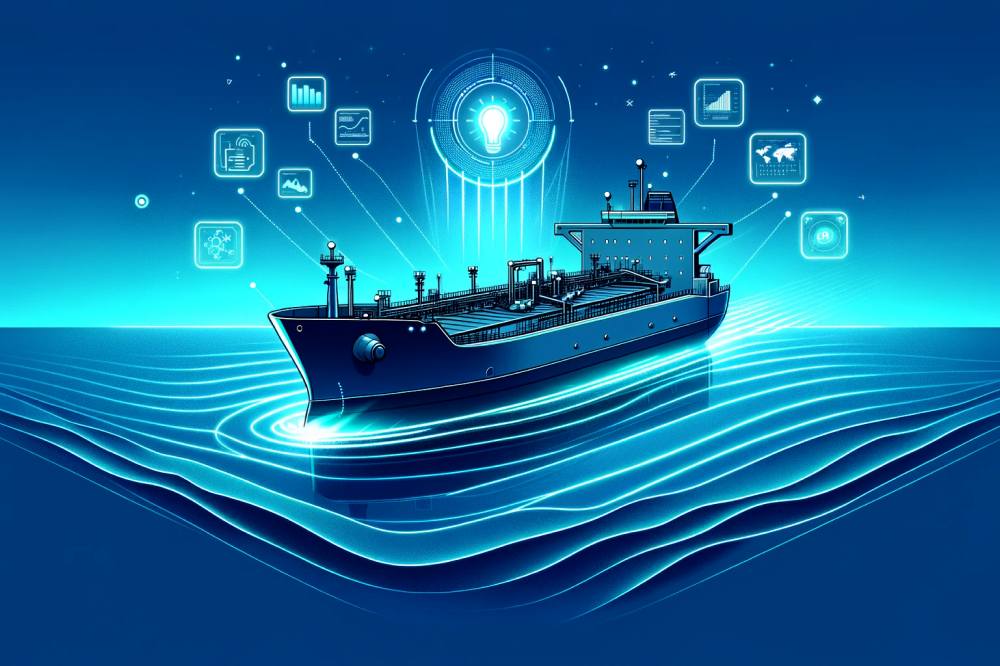
Will the Ammonia Shipping Market Boom?
The world is trying to find the optimal green solution for its future energy needs. Everyone agrees that solar and wind will play a large part. Solar and wind energy can be produced at a fairly low cost in certain parts of the world, but that is not typically where people want to live, so it has to be transported to where there is a need for it. The challenge is to do that in the most cost effective way.
As we have touched on before, one of the ways to store the energy is to produce hydrogen, which can then be shipped to more populated parts of the world. But transporting hydrogen in ships is very expensive. Another way could be to use the green hydrogen to produce green ammonia which is much easier to transport.
Ammonia is an inorganic compound composed of a single nitrogen atom bonded to three hydrogen atoms - NH3. The green hydrogen would be produced by using solar or wind power to electrolyze water to split it into oxygen and hydrogen. The nitrogen would be purified from the air, and the nitrogen combined with the hydrogen in something called the Haber-Bosch process that then produces ammonia.
Ammonia is already an important global commodity, with a production in 2020 of about 183 million tons (Mt), nearly all of it by fossil fuels. Ammonia is mainly used to produce nitrogen fertilizers. About 90 percent of the production is at integrated plants that use the ammonia locally, but about 18-20 Mt annually is traded on ships around the world. It is estimated that ammonia production represents about 1 percent of the annual global emission of CO2. It is also worth noting that today’s production of ammonia uses about 45 percent of the current global hydrogen production.
Proponents of ammonia as an important factor in the reduction of greenhouse gas emissions points to three areas where they see there could be potential for ammonia in the future:
- Ammonia as a fuel for stationary power. Replacing or blended with existing gas or coal power plants.
- Ammonia as a zero-carbon fuel for the shipping industry.
- Ammonia as a hydrogen carrier for long haul shipments. Which would then require cracking back to hydrogen again.
The International Renewable Energy Agency (IRENA) estimates that the production of green and blue ammonia (gas production with carbon capture) if the world is to manage the maximum 1.5 degree increase in temperature to be a total of 688 Mt in 2050. In addition to the cost of producing this green ammonia there are other major stumbling blocks as well.
- Electrolyzer production capacity was only about 14 GW per year in 2022 according to BloombergNEF, and they further estimate that it will reach about 27 GW by the end of this year. In order to produce 1 million a year you need between 2 and 3 GW of electrolyzer. To get on track with the Net Zero Emissions by 2050 Scenario the world needs 700 GW capacity installed by 2030. The current installed capacity is about 1.4 GW estimated to grow to about 5.5 GW by the end of this year.
- Ammonia infrastructure such as ports, ships, storage etc need to grow 10-15 fold, requiring tens of billions of USD annually.
- Demand for ammonia for energy should not put fertilizer supply and food production at risk. The poor farmer in large parts of the world will not be able to afford fertilizing his field if the price of fertilizer becomes too expensive, as we have seen recently with the war in Ukraine.
- Government policies to reduce carbon emissions is uncertain. Political ambitions tend to change when the cost becomes too high for the population. This limits investments.
So what does all this mean for shipping?
A few months ago IRENA reported that the currently announced renewable ammonia project represents an increase in production of about 15 million tons by 2030, and there seems to be new announcements every week. In addition we see that the oil majors are starting to buy large portions in some of these projects, which should make them easier to finance. Shell has bought 35 percent and assumed operatorship of the Green Energy Oman project that aims to have 25 GW of wind and solar power, and plans to produce over 1.8 million tons per year of green ammonia. BP bought a majority stake and operatorship in the Australian Renewable Energy Hub last year where the plan is to have 26 GW of wind and solar power and produce up to 9 mill tons of ammonia. Total has assumed the lead role in the H2 Magallanes project in Chile, which will produce 4.4 million tons of ammonia when they reach full capacity. And the list goes on.
A lot of the green ammonia projects are in places like Australia, Oman, Saudi Arabia, UAE, and Chile. Places where there is plenty of sun and wind, fewer people, and where they do not have much ammonia production today. So quite a bit of this production is designated for export.
Most of the 18-20 million tons of ammonia that is traded by ships today, are transported on Large Gas Carriers (LGC) and Medium Gas Carriers (MGC). About 40 ships are employed in the ammonia trade today, but there are plenty more of gas ships that are able to lift ammonia. Technically there are no problems building larger ammonia ships, in fact quite a few of the VLGC being ordered these days are ammonia ready. The problem for these ships in today’s market is on the shore side where most of the export and import facilities are built for smaller vessels. So the existing ports would need to add storage capacity to cater to the larger ships or new terminals will have to be built from scratch.
A VLGC size ship can lift about 60,000 mt of ammonia. A round trip from the North Western part of Australia to Japan takes about 25 days, so one VLGC carrying ammonia on this route will realistically, with a bit of delay here and there, be able to transport about 800,000 mt per year.
So, if and when BP manages to get the production in Australia up to 9 million tons per year, they would still only need 11 ships to transport the full volume to Japan. And as far as I know they haven’t started building on their site yet. There are a lot of solar panels and windmills to be ordered and produced, and a lot of electrolyzers to be manufactured and put in place, and a lot of port facilities to be constructed, before the first ton is exported.
If all the announced projects take place on time, i.e. before 2030, we will have an additional demand for ammonia VLGC in the order of about 20 ships if all the additional ammonia will be carried on that size ships, which will not happen of course. The shipping world is more dynamic than that. Today there are about 360 VLGC trading, and a further 40 or so new buildings being delivered this year.
I think there will be more ammonia, green ammonia, being shipped in the future. But if I was ordering a VLGC today I probably would not be willing to accept a much higher price for the option to get it ammonia suitable.

Create a free user account in ShipIntel to follow the LPG market, and let me assist you if you have any questions.















